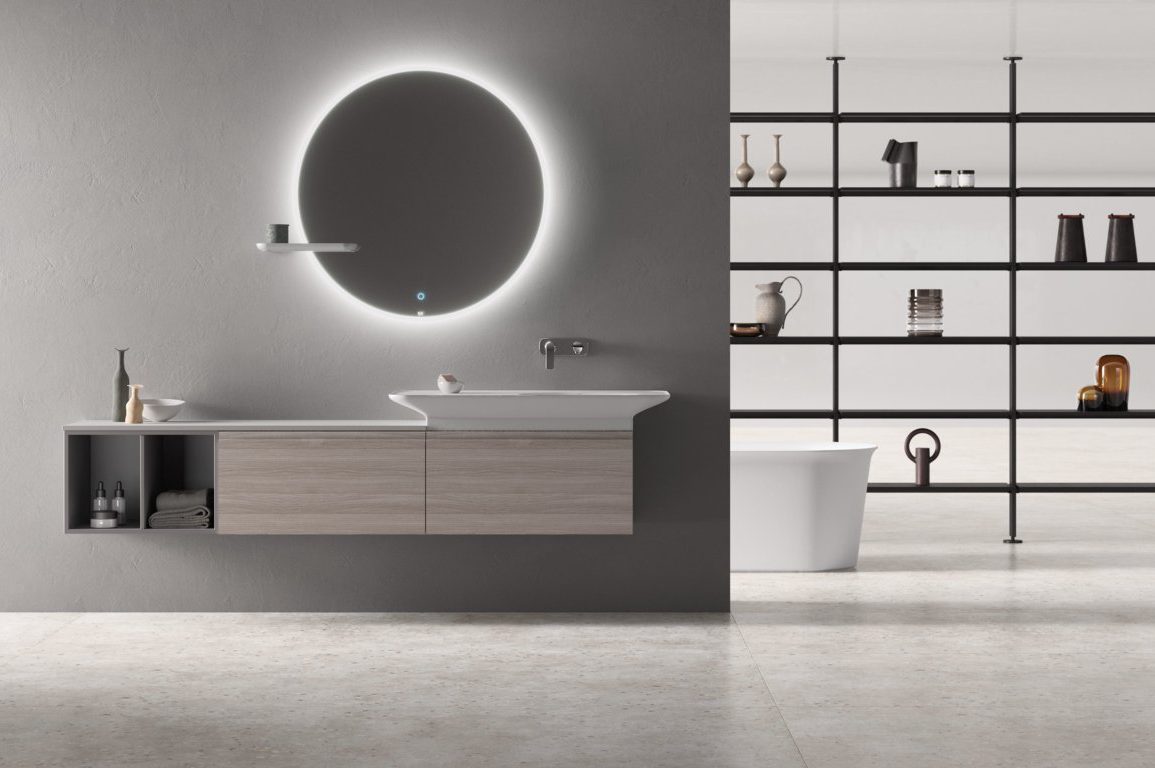From the unprecedented collaboration of Patrick Norguet with RAK Ceramics comes a stunning bathroom project: RAK-Valet. It is the embodiment of a unique talent for understanding a need and creating a functional, long-lasting solution that fits in perfectly with the context. A cluster of visions, drawings, exclusive shapes and a fast-paced rhythm leading to unexpected solutions: this is what the French designer brings to each of his new creations.
We met up with him to find out more about this new collection.
– How did your collaboration with RAK Ceramics begin?
As always, through a meeting! I was contacted by Davide Cesca, in charge of design for the brand, then we met in Italy at the CERSAIE trade fair in Bologna. The desire to collaborate together and design a collection for RAK was immediate. The scale and power of the brand offers a great mastery of the development process and a distribution strength, which is very motivating for a designer!
– What inspired you to create the RAK Valet line?
I always start by drawing by removing my references to start with a “blank page”. I then try to understand the context and the scope of the project: a brand, people, processes, machines, materials, a market, etc., in short everything that allows me to define a strategy.
I then begin to sketch out creative axes and various directions filtered by my perceptions, which are the basis for the beginning of my work.
Each time it’s a new adventure, a mechanism that takes place within me but which is not based on any logical or Cartesian approach: I can say that it’s creation “in its raw state”. Then, a work of elimination takes place to get rid of what is useless, to find the “right note” and to respond pertinently to my client’s needs.
– Why did you choose this name?
“In the service of … “Rak-Valet is quite simply a collection at the service of its user, with generous and functional shapes that accompany the ritual(s) associated with its use.
– How would you define RAK Valet in 3 adjectives?
Elegant, timeless, crosswise.
– How can design influence people’s daily lives?
Design only makes sense if it makes sense. It must be innovative, useful, aesthetic, understandable, honest, discreet and sustainable…. To quote Dieter Rams: “Good design is the minimum possible design.” A meaningful object can indeed influence our everyday life; it is also a question of culture and education.
– You are renowned for your extraordinary ability to make the wishes and desires of the companies you work with come true: what is your secret?
I have no secrets, I think it’s a question of work and commitment. I like a job well done. It’s also a question of being demanding of oneself, of rigour… I think I have a flaw, it’s being a perfectionist! But a good design must be thorough, down to the smallest detail, you must not let go of anything….
A chat with Patrick Norguet










